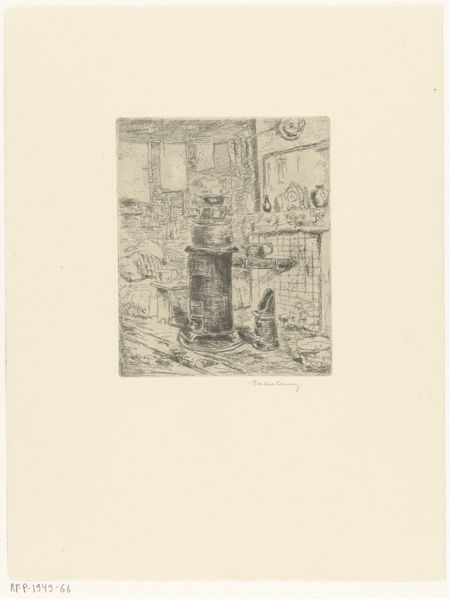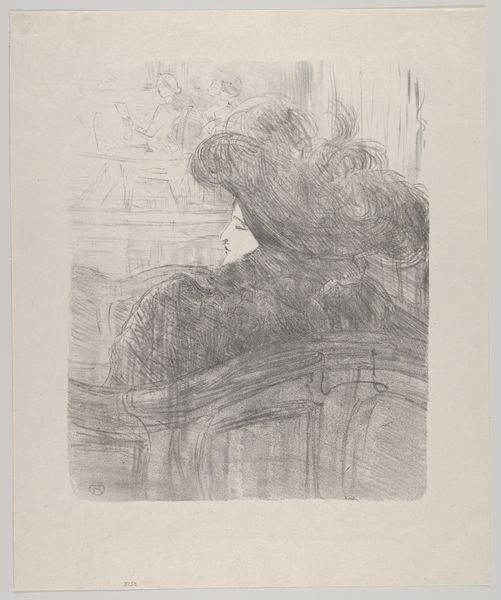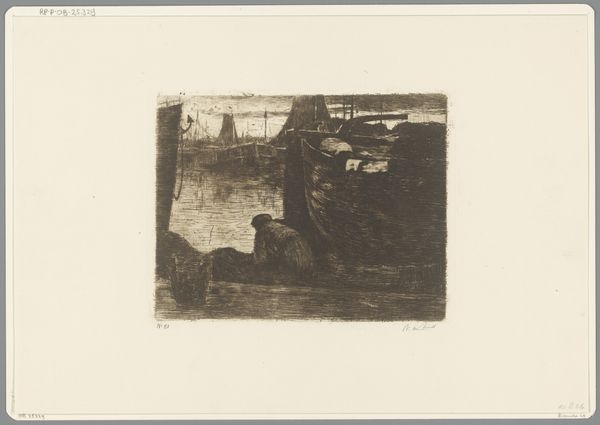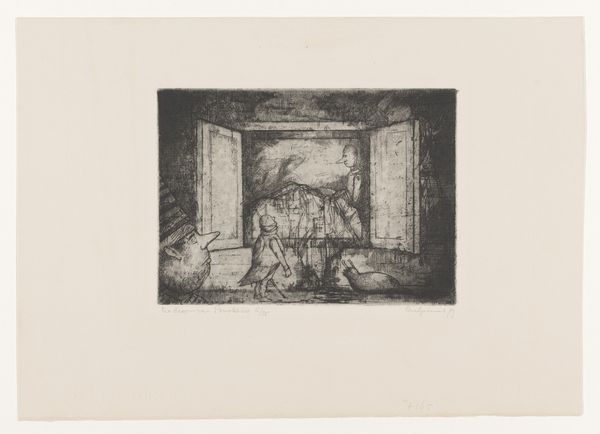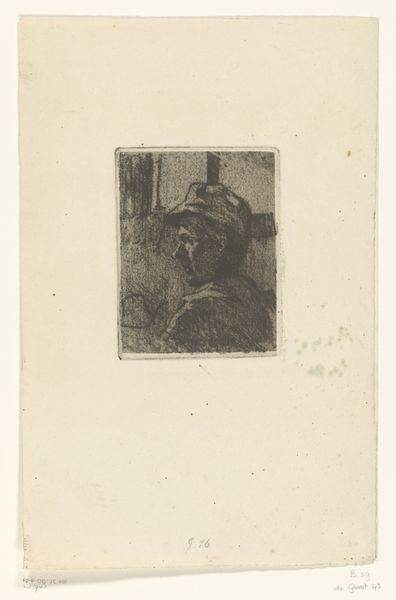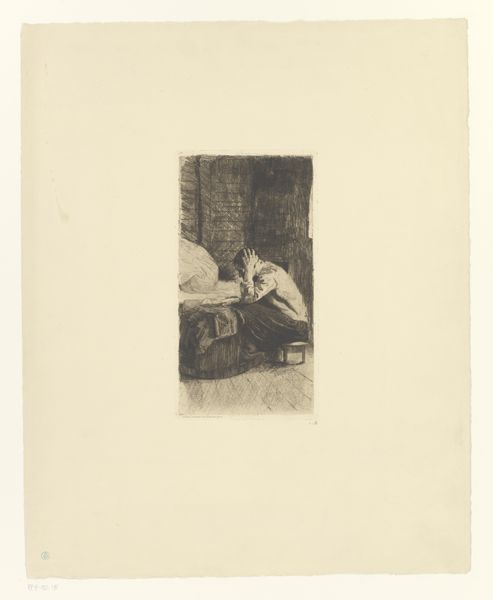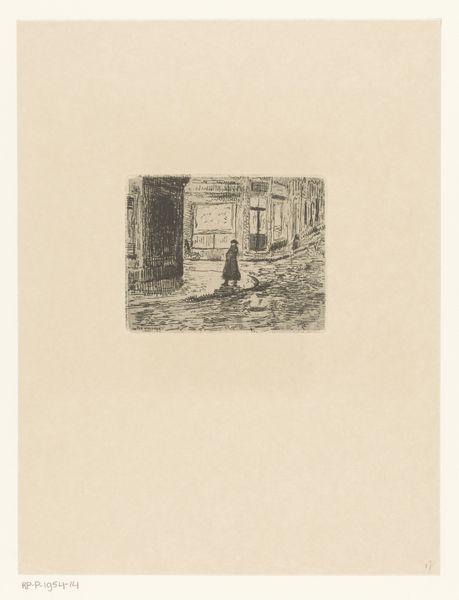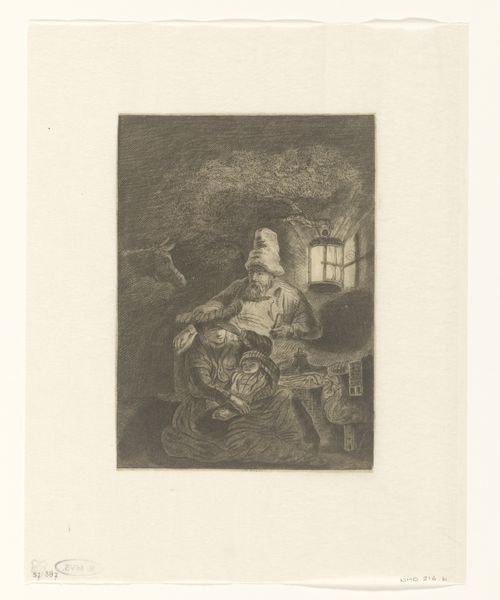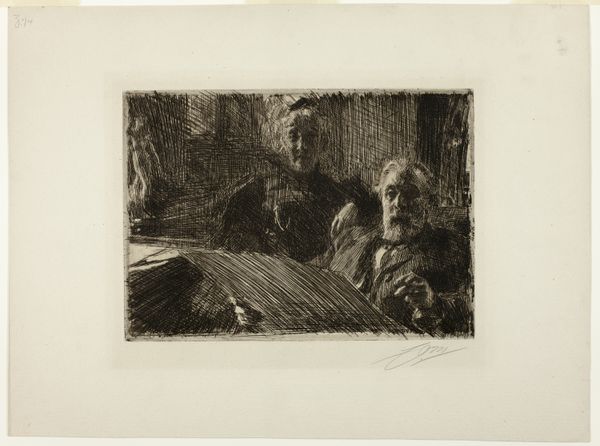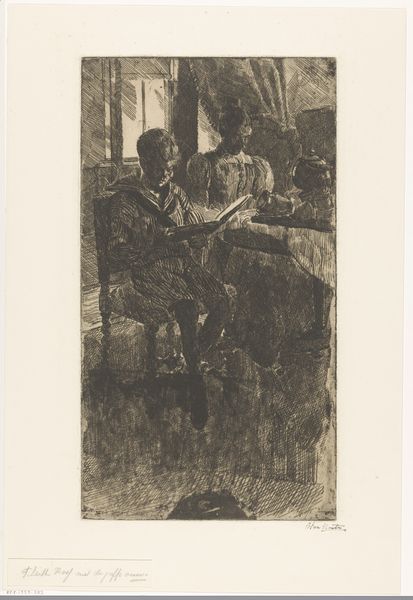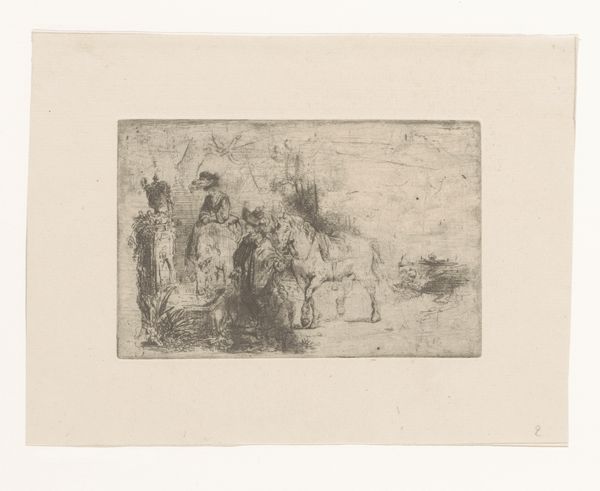
Klein meisje in een grote rieten stoel in interieur 1886
0:00
0:00
carelnicolaasstormvansgravesande
Rijksmuseum
drawing, pencil
#
portrait
#
drawing
#
impressionism
#
charcoal drawing
#
pencil drawing
#
pencil
#
realism
Dimensions: height 118 mm, width 164 mm
Copyright: Rijks Museum: Open Domain
Curator: This is Carel Nicolaas Storm van 's-Gravesande's piece, "Klein meisje in een grote rieten stoel in interieur," or "Little girl in a large wicker chair in interior," created around 1886. It resides here at the Rijksmuseum. Editor: Immediately, the dramatic chiaroscuro grabs me. The stark contrasts of light and shadow create a sense of intimacy, yet the figure remains partially obscured. Curator: Van 's-Gravesande, working during the rise of industrialization, demonstrates here an awareness of the materials and the working class through depicting the quotidian with available drawing materials such as pencils. It is a work born of observation and accessibility, not luxury or grandeur. The act of depicting such scenes elevates the importance of everyday life. Editor: The textures! Note the subtle differences achieved purely through the application of pencil: the woven wicker of the chair, the soft glow on the girl's face, and the rough-hewn quality of the background. This manipulation of tone and mark-making to create such visual variety is compelling. Curator: Right, the use of pencil and charcoal—relatively inexpensive and readily available materials—signals a democratizing shift. This isn't oil paint for a wealthy patron, this is a medium accessible to many, portraying an unassuming subject, and reflecting perhaps the expanding market for printed and reproduced images accessible to more people, as the commercialization of art accelerated. Editor: There's something so quietly powerful about the composition. The oversized chair dwarfs the child, creating a visual tension. It suggests vulnerability and isolation but the light on her face projects calm focus and purpose. It's a striking study in contrasts of scale and tonality. Curator: By placing a young girl centrally, it also encourages viewers to examine childhood innocence but also how class and society shape these tender formative years, highlighting socio-economic forces from this pivotal moment in history. Editor: It really showcases how simple materials, carefully handled, can create such complexity and emotion. It moves beyond just documentation, revealing universal experience through form. Curator: Precisely, which gives insight into our present understanding of the conditions and influences that shape both production and subjects today. Editor: Well, looking closer was an illuminating demonstration of simplicity in service of conveying something meaningful!
Comments
No comments
Be the first to comment and join the conversation on the ultimate creative platform.

